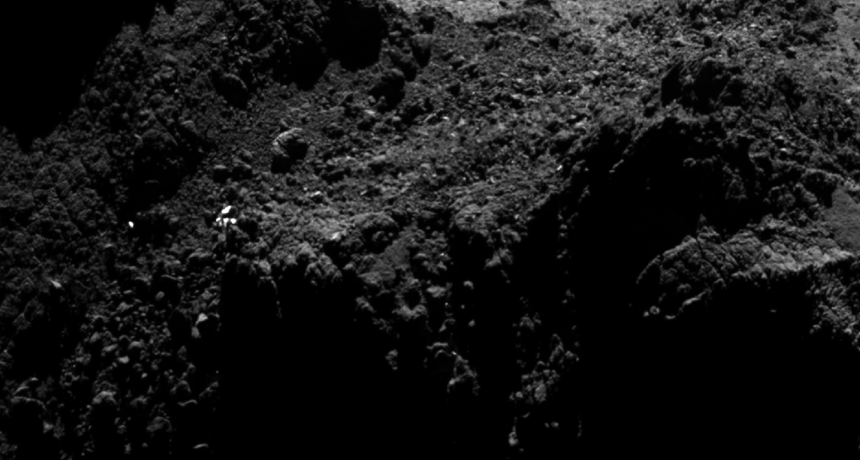News Brief: Surprise — comet lander awoke!
Lack of sunlight had sent it into a deep slumber

This close-up of the comet shows where Philae probably came to rest. The bright spot could be the lander itself or just a feature of the comet's surface, mission scientists say.
ESA/ROSETTA/MPS FOR OSIRIS TEAM MPS/UPD/LAM/IAA/SSO/INTA/UPM/DASP/IDA







